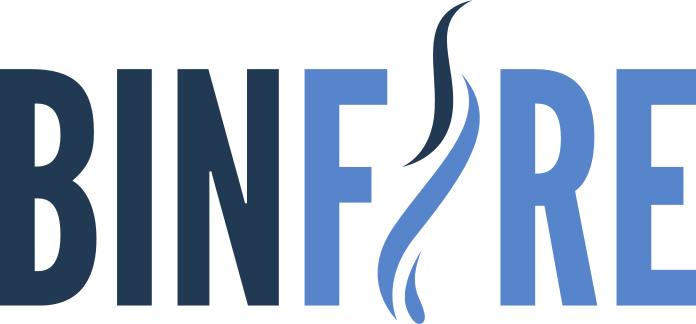Small businesses face a shifting federal contracting landscape in 2025. Policy updates, new legislation, and changes to procurement rules will shape how contracts are awarded and who qualifies for opportunities. Small firms that track these trends and adapt early will place themselves in a stronger position to compete and win.
Competition continues to increase as agencies push for innovation, cost savings, and broader participation. At the same time, lawmakers are debating bills that could reshape set-aside protections, certification rules, and access for programs like 8(a), WOSB, and SDVOSB. These changes may decide whether smaller firms gain fair access or lose ground to larger competitors.
Technology adoption, sustainability goals, and evolving agency priorities also influence where federal dollars flow. By understanding these shifts and aligning strategies with them, small businesses can uncover new opportunities while avoiding common setbacks. This article explores the most important trends for 2025 and how small firms can position themselves for success in the federal marketplace.
Necessary Federal Contracting Trends for Small Businesses in 2025
Small businesses face new challenges in federal contracting as compliance standards grow tighter, technology reshapes procurement, and acquisition rules shift toward efficiency. Contractors who understand these developments can adjust strategies and remain competitive in a changing market.
Evolving Cybersecurity and Compliance Standards
Federal agencies continue to place stronger emphasis on cybersecurity. Small businesses must now meet higher standards for protecting data and reporting potential risks. These requirements add cost and complexity but also create opportunities for firms that can demonstrate strong security practices.
Compliance goes beyond cybersecurity. Policies tied to “Made in America” rules, fraud prevention, and supply chain transparency now carry more weight in contract reviews. Contractors that fail to prove compliance face delays or disqualification.
To manage these demands, many firms invest in training and outside expertise. Federal government contracting experts help businesses interpret shifting policies and align internal processes. This support reduces risk and builds credibility with contracting officers.
AI, Automation, and Digital Transformation in Government Procurement
Agencies continue to expand the use of artificial intelligence and automation to evaluate proposals, monitor performance, and streamline workflows. This shift means contractors must present data-driven, well-structured proposals that align with automated review systems.
AI also shapes mission delivery. Agencies seek contractors that can integrate advanced analytics, predictive tools, and automation into projects. Small businesses with flexible operations often adapt faster than larger competitors in adopting these technologies.
Digital transformation also affects how opportunities are discovered. Firms that understand procurement platforms and leverage tools to track opportunities gain a stronger position. Those new to the space can work with advisors to start winning government contracts by aligning strategies with evolving procurement technology.
Updates to Federal Acquisition Regulations and Streamlined Processes
Acquisition reform continues to influence how contracts are awarded. Agencies now focus more on “best value” rather than lowest price, which allows small businesses to compete based on quality and innovation.
Streamlined processes reduce some administrative burdens but also increase competition by opening opportunities to a wider pool of contractors. For small firms, this creates both risk and potential growth.
Policy changes also affect subcontracting. Larger prime contractors face new rules on how they engage small businesses, which may expand opportunities for firms willing to partner. Staying informed on updates to the Federal Acquisition Regulation (FAR) remains important for maintaining eligibility and building long-term success.
Maximizing Small Business Opportunities in the Federal Marketplace
Small businesses can position themselves more effectively in federal contracting by using certifications, aligning with the right contract vehicles, and adapting to policy shifts. Success often depends on preparation, accurate registration, and a strategy that matches agency needs with business capabilities.
Leveraging Socio-Economic Certifications and Small Business Programs
Socio-economic certifications remain a key entry point for many government contractors. Programs such as 8(a), HUBZone, SDVOSB, and WOSB create set-aside opportunities that limit competition to a smaller pool of firms. This gives certified businesses a higher chance of securing federal contracts.
Agencies must meet small business contracting goals, and certifications help them achieve those targets. For example, a certified WOSB may qualify for opportunities that are not open to other small firms. Similarly, HUBZone-certified companies can benefit from contracts reserved for businesses located in historically underutilized areas.
Certification also strengthens a company’s credibility with prime contractors. Many primes seek small business partners to meet subcontracting requirements. A certified firm can use this to build relationships and gain experience on larger projects.
However, certification alone does not guarantee work. Firms should pair certification with a strong capability statement, active registration in SAM.gov, and consistent pursuit of opportunities through simplified acquisition thresholds and micro-purchases.
GSA Schedules, NAICS Codes, and Business Development Strategies
A well-chosen NAICS code defines how a business competes in the federal marketplace. Each contract opportunity lists a primary NAICS, and agencies often use these codes to track procurement goals. Selecting the correct codes during registration helps a firm align with the right solicitations.
The GSA Schedule program offers another pathway. By securing a schedule contract, a small business gains a pre-approved vehicle that agencies can use for direct purchases. This reduces barriers and shortens procurement timelines.
Business development also requires targeted outreach. A small business should research which agencies buy its products or services and then tailor its strategy. This includes refining proposals, building past performance, and networking with both contracting officers and prime contractors.
Maintaining accurate data in SAM.gov and keeping marketing materials current supports these efforts. A clear, concise capability statement often serves as the first impression for agency buyers.
Supply Chain Resiliency and Buy American Initiatives
Federal policy changes continue to emphasize supply chain resiliency and compliance with Buy American rules. Small businesses that source materials domestically or work with compliant suppliers may see more opportunities as agencies prioritize American-made goods.
This trend affects both product and service contracts. For example, construction firms in the 8(a) program or HUBZone may need to prove that materials meet domestic sourcing requirements. Service providers may also need to show that subcontractors align with federal sourcing rules.
Resiliency also means reducing reliance on single suppliers. Small businesses that build diverse supply chains can adapt more quickly to disruptions. This flexibility makes them more attractive partners for agencies and primes that want to avoid delays.
By combining compliance with proactive supply chain planning, small businesses can compete more effectively. Those who prepare early will be better positioned as agencies continue to adjust procurement practices in 2025.
Conclusion
Small businesses face both challenges and opportunities in the 2025 federal contracting market. Shifts in policy, budget priorities, and compliance rules will shape how they compete for contracts.
They must pay close attention to areas such as cybersecurity, acquisition reform, and small business program changes. These factors will directly affect access to contracts and the cost of doing business.
Success will depend on preparation, awareness of new requirements, and the ability to adapt strategies quickly. By staying informed and flexible, small businesses can position themselves to compete effectively in the year ahead.




